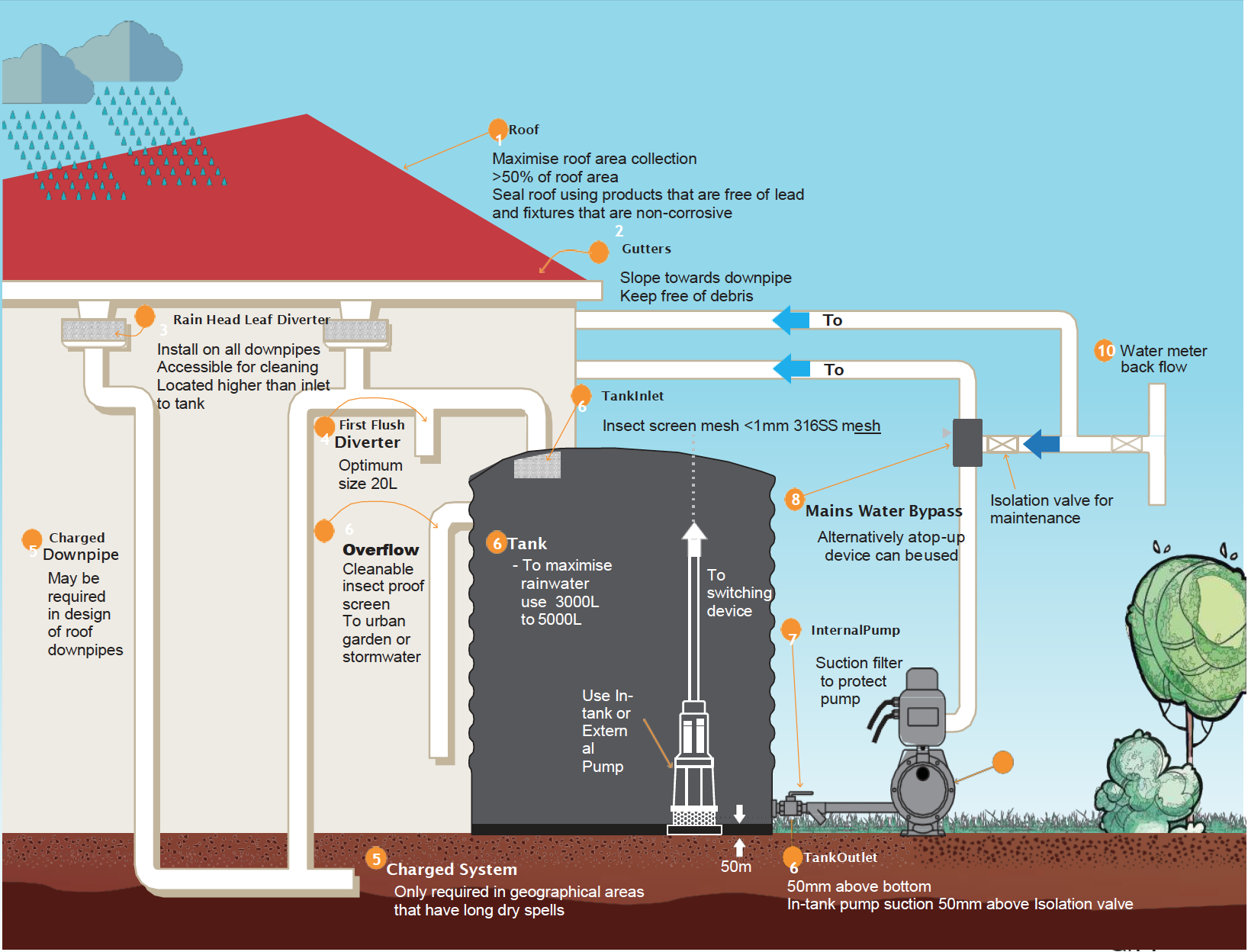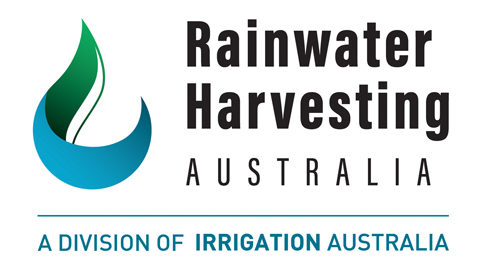Care & Maintenance of Rainwater Tanks
How intensive is the care & maintenance of rainwater tanks? One of the benefits of a rainwater tank is that it requires little maintenance. It is best to think ofyour rainwater harvesting system as you would a hot water system or swimming pool pump/filter. Generally, they work seamlessly without intervention, but if you do understand theway they operate, then it’s infinitely easier to identify when things aren’t quite right!
How does a rainwater tank work?
Rainwater itself is very clean. The goal is to keep the rainwater clean as it goes through the rainwater collection system and delivered to your house. Rainwater is collected from your roof (in the gutters) and flows down the downpipes into your rainwater tank. The downpipes should be fitted with a leaf diverter, to stop leaves travelling through the downpipe and then in to the tank.They should also be fitted with a First Flush device, which helps divert a small amount of water away from the tank when it first rains, thereby preventing roof debris from entering. Rainwater enters the tank through a screen at the top, being the final pre-filtration. This screen and the overflow pipe screen prevent mosquitos and other animals entering the tank.
How does ‘rainwater harvesting’ work in the context of my home? Rainwater is transported from the tank by a pump residing either within, or outside of the tank. This pump can deliver water to the house: think toilets, washing machines, garden taps, and possibly the hot water system… all are effectively supplied! Once you turn on a tap, flush a toilet, or start a load of washing – if rainwater is indeed stored in the tank – then the pump will do its job. To facilitate rainwater harvesting, your house may be fitted with a Mains Bypass Device or Tank Top-up System. This means that when there is no available rainwater, the system will automatically use mains water. But, when it next rains – and the tanks stores some water – that’s the water supply you will see pumped.

Specification and diagram produced by UWCS and RHA and are not to be reproduced without permission.
If you require more information, read the Rainwater Harvesting Residential Design Specification at https://rainwaterharvesting.org.au/rainwater-harvesting/papers/
Understand, Look & Listen… how do I know if there is a fault?
The Pump
There is a very basic – yet effective – method of determining whether your pump is working. When there is water in your tank, simply flush your toilet and check whether the pump starts. Does it make a noise? If not, there could be a malfunction.
The Rainwater
If your pre-filtration and/or first flush devices are not correctly installed your rainwater from your tank may become discoloured over time. This is usually visible by the discolouration of the rainwater in the toilet bowl or in your washing machine.
Keeping the water clean as it enters is the best way of reducing tank maintenance.
How can I prevent these problems?
Visually check system when it is raining to ensure gutters are not overflowing, downpipes are not blocked or leaking, and rainwater is flowing to the tank.
At the beginning of every season, you should:
▪ clean roof gutters;
▪ clean any leaf diverters;
▪ clean your First Flush device;
▪ clean the strainer at the entry to the tank and on the overflow of the tank. Replace screen if damaged so mosquitos do not enter; and
▪ clean the suction strainer to the pump.
How do I get help?
If you experience either a problem with The Pump or The Rainwater, consult:
- The product manuals – look online if you do not have a copy.
- The manufacturer of the system or product – they can help you to troubleshoot the problem
- Rainwater Club Australia on Facebook – ask the rainwater community for help
